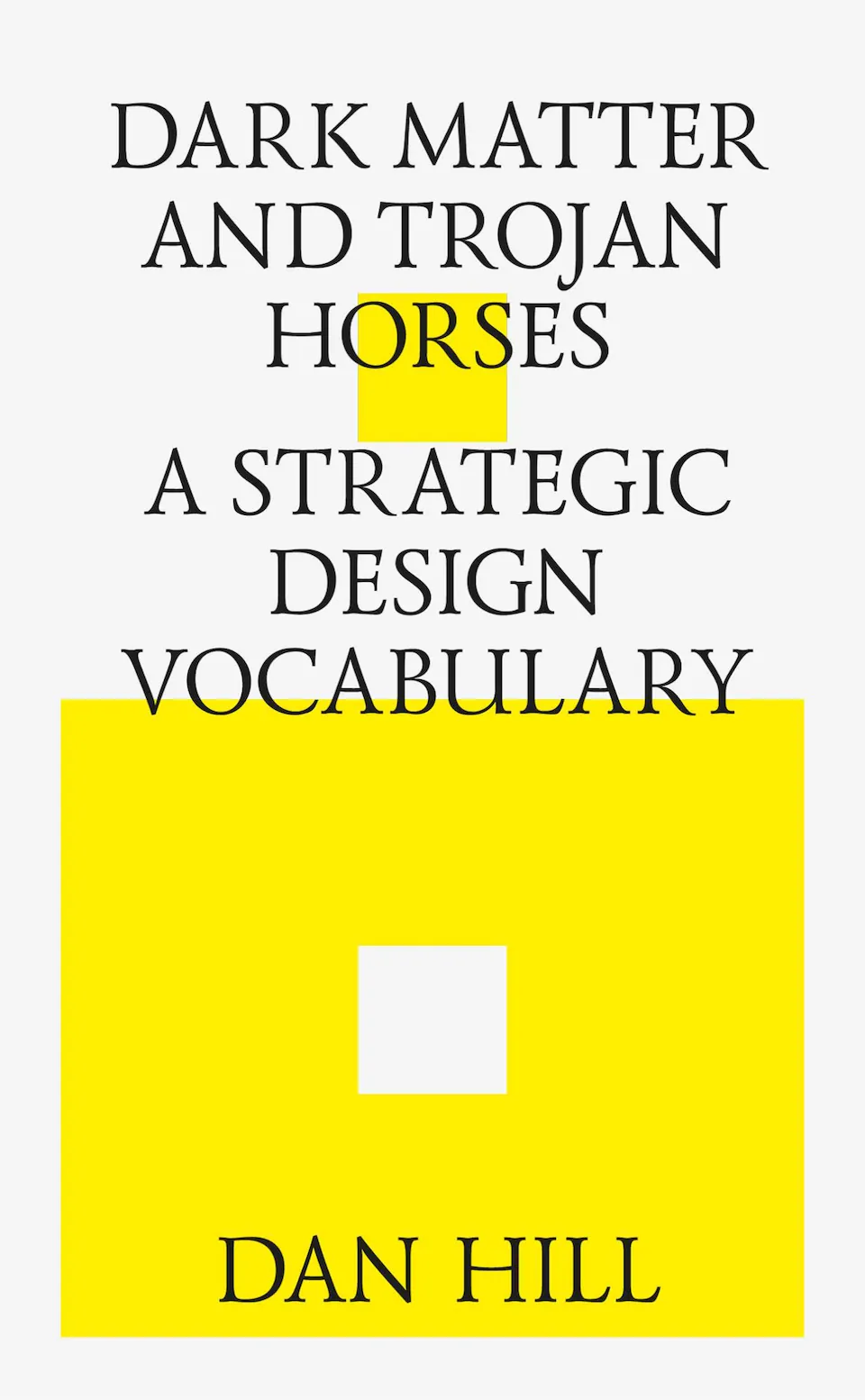Dark Matter and Trojan Horses: A Strategic Design Vocabulary
by Dan Hill
Added:
Jun 7, 2018
Book Description
In this short book, Dan Hill outlines a new vocabulary of design, one that needs to be smuggled into the upper echelons of power. He asserts that, increasingly, effective design means engaging with the messy politics - the dark matter” - taking place above the designer’s head.”
Notes & Highlights
A brief sidenote on Sitra: “Sitra, the Finnish Innovation Fund, is an independent public foundation promoting the wellbeing of society under the supervision of the Finnish Parliament.” (sitra.fi/ en) Founded in 1967, as a kind of birthday present from the nation to the nation on the anniversary of Finland’s independence, Sitra is engaged in long-term systemic change, through project work, research and investment funding. The Strategic Design Unit (SDU) at Sitra, led by Marco Steinberg, is a direct attempt to embed design practice at the heart of systemic change, through engaging with policy, public service, social innovation and wider civil society. Projects include Low2No and Helsinki Design Lab.
In terms of extending this legibility further, other elements of strategic design practice as conducted by Sitra’s SDU are outlined and discussed on the Helsinki Design Lab (HDL) website at helsinkidesignlab.org. In addition, SDU has published a book, In Studio: Recipes for Systemic Change (2011), which focuses in particular on the HDL Studio model, which is designed to rapidly prototype vision in complex, interdependent problem areas by better understanding the architecture of the problem.
This basic idea, zooming back and forth from matter to meta, and using each scale to refine the other, is core to strategic design.
For example, Low2No is designed to be a largely wooden building, of some scale (around 11-12 storeys in places). This is partly as timber is such a strong contender for a low-carbon building material, given the way it “locks up”, or sequesters, carbon, as compared with the more carbon-intensive concrete and steel. This is now possible because of the existence of cross-laminate timber as a building technology, which is fire-safe and structurally sound. And this is preferable as Finland has a vast and mature forestry and timber industry, which is nonetheless threatened by cheaper, faster timber production from developing economies nearer the equator. If it can compensate for this potential loss of paper and pulp processing, its traditional business, via timber as construction material, the Finnish forestry industry has a new trajectory to explore. In order to enable the use of timber in the building, the project had to change the fire codes within Helsinki. These were a legacy from the 19th century, when timber buildings burnt with regularity, and hadn’t been updated in this respect since.
Strategic projects such as Low2No must be beyond mere prototyping, or “showcases of sustainable living”. It must be a real block, with real inhabitants living and working in it, as it is the foundations upon which the subsequent or associated strategies sit. Remove the foundations, and the whole strategic edifice might crumble.
These words and concepts may offer some value: the MacGuffin provides motivation that drives strategic outcomes; the Trojan Horse contains the seeds of multiple strategic outcomes; the Platform elements enable those strategic outcomes to be diffused elsewhere, with prototyping of different layers ensuring its ongoing development. This vocabulary is not new —it’s been borrowed and appropriated from elsewhere. But being able to ask the question “What’s the MacGuffin?” or “How will this work as a Platform?” or “Where are the pivot points?”, for example, introduces into projects and practice a strategic element, a magnetic pull on the concepts of strategic replicability and systems thinking.
The dark matter of strategic designers is organisational culture, policy environments, market mechanisms, legislation, finance models and other incentives, governance structures, tradition and habits, local culture and national identity, the habitats, situations and events that decisions are produced within. This may well be the core mass of the architecture of society, and if we want to shift the way society functions, a facility with dark matter must be part of the strategic designer’s toolkit.
DESIGNING THE CONTEXT OF THE WORK “Always design a thing by considering it in its next larger context — a chair in a room, a room in a house, a house in an environment, an environment in a city plan.” (Eliel Saarinen)
Get a copy
